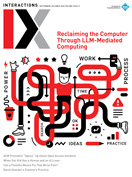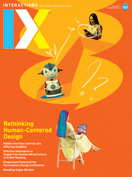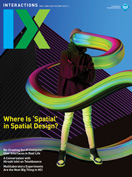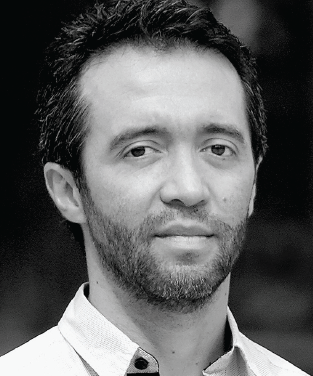Authors:
Josh Andres
How would you describe your career trajectory and current role?
My career in technology spans over 20 years across industry, industrial research, and academia. I've worked as a UX/UI designer creating multidevice experiences across the Asia-Pacific, as an HCI researcher and UX designer at IBM Research Australia, and now as a senior lecturer at the University of New South Wales.
In my current role, I focus on HCI, interaction design, and UX research and education—from supervising graduate and undergraduate students to curriculum development, teaching, and establishing collaborations. I'm open to collaboration and co-supervision, especially across disciplines and sectors.
We may see a shift toward valuing the absence or minimal presence of technology in everyday life, recognizing the importance of moments without digital intervention.
My research explores three interconnected areas: novel interactions with emerging technologies, often involving multisensory and multimodal systems, along with design guidelines that support futures-oriented design; more-than-human design, which fosters sustainable and relational approaches to technology; and body-centric computing, where I develop interfaces that treat the body as a site of performance, play, and augmentation.
What are you working on right now?
I've been exploring the kinds of relations GenAI technologies can enable across different settings. This includes designing interfaces that are nonlinear and open-ended—valuing pluralistic views, challenging assumptions, and configuring new ways for people and technology to relate.
I've also worked on a speculative installation that used GenAI-generated text and sound from live building data to create an audiovisual space—a living pulse that revealed relationships through a multisensory experience (http://bit.ly/442mW9g).
In an ongoing program of work, we're examining the futures enabled by the increasing integration of AI into everyday devices (http://bit.ly/3T90zZm). We're developing and sharing tools and methods to support relational thinking in design. This includes considering who is using the technology across different demographics and abilities, its relationships to other humans and nonhumans in the space, the sociocultural imaginaries and contexts of use, and the often invisible infrastructures it depends on.
What inspired you to forge a career in HCI?
I've always been curious about technology. Growing up with a computer and video game consoles, I spent hours tinkering and exploring what I could do with them. That early interest led me to study multimedia design, sparked a passion for user experience, and eventually guided me toward a Ph.D.
Which volunteering roles are you taking on right now?
I founded the ACM SIGCHI chapter for Canberra, Australia, and have been chairing it for the past 18 months.
What drew you to take on this role?
I started the chapter to bring together a community of research and practice. The chapter serves as a platform for people to connect, share, and learn. From the outset, our aim has been to invite members to cohost events and propose ideas, such as workshops, symposiums, and talks. These help ensure that the chapter thrives and the effort of maintenance is distributed.
What are you working on right now?
We're planning a series of industry research sessions to strengthen engagement with industry and promote opportunities for collaboration.
What is one thing you'd like to see happening in the SIGCHI community?
We could place a little less emphasis on newness and novelty when assessing the value of research and instead uplift depth and impact—particularly in translational research that makes it easier for industry to use the outcomes.
Ten years from now, what issues do you imagine the HCI community may be confronting?
We may see a shift toward valuing the absence or minimal presence of technology in everyday life, recognizing the importance of moments without digital intervention. This could drive the development of technologies that delay interruption or avoid attention-seeking behaviors, instead adapting more sensitively to context, place, and time.
What excites you about the future of our field?
The opportunity to support the design, evaluation, and use of technologies that promote healthy, playful, inclusive and sustainable relationships.
What advice would you give a young colleague at the start of their professional career?
Make connections, go to local events, find mentors, look for and offer opportunities for collaboration, look after yourself and others, and have fun!
Josh Andres is a human-computer interaction, interaction design, and UX researcher and educator with experience across industry, industrial research, and academia. He explores the design and experiential dimensions of emerging technologies, focusing on human-AI interaction, body-centric computing, and more-than-human design to support more inclusive, collaborative, and sustainable ways of living with computation. [email protected]
Copyright 2025 held by owner/author
The Digital Library is published by the Association for Computing Machinery. Copyright © 2025 ACM, Inc.








Post Comment
No Comments Found